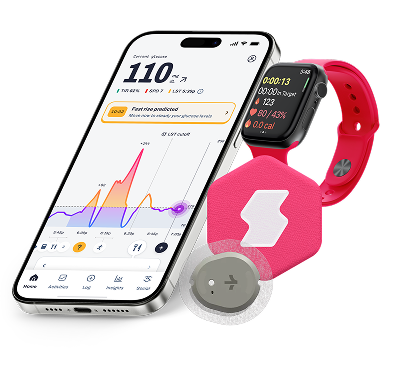Chickpeas, also known as garbanzo beans, are nutrient-dense legumes widely used in various cuisines. They are rich in protein, fiber, and essential vitamins and minerals, making them a valuable addition to a balanced diet.¹ Notably, chickpeas have a low glycemic index (GI) of approximately 28, which means they cause a slower rise in blood sugar levels compared to high-GI foods.² This characteristic makes them particularly beneficial for individuals managing blood sugar levels, such as those with type 2 diabetes.²
This article will explore the glycemic index of chickpeas, their impact on blood sugar regulation, and the health benefits of incorporating them into your diet.
Sign up to be the first to know about special offers and exciting Signos news.
Glycemic Index Table
Chickpeas have a glycemic index (GI) of approximately 28, which classifies them as a low-GI food.¹ This low GI means chickpeas have a minimal impact on blood sugar levels, making them suitable for individuals managing diabetes or those seeking sustained energy. Interestingly, cooking methods can slightly influence the GI; for example, overcooking can increase the GI due to starch breakdown.²
For a serving size of 100g, with 20.8g of carbohydrates, the glycemic load (GL) is calculated as follows:
GL = (GI × Carbohydrate per serving) ÷ 100
GL = (28 × 20.8) ÷ 100 = 5.82
Thus, the GL per serving of chickpeas is 5.82, which further reinforces their suitability for blood sugar management.¹

Nutritional Facts
Chickpeas are a nutrient-dense food, providing 128 kcal per 100g serving, making them an excellent source of energy.¹ They contain 20.8g of carbohydrates, 8g of protein, and 4g of dietary fiber, which supports digestive health and contributes to satiety.² Additionally, chickpeas are low in fat, with just 1.6g per serving, and contain no cholesterol, making them heart-friendly. They are rich in essential minerals, including 232mg of sodium, 64mg of calcium, 1.15mg of iron, and 248mg of potassium, which collectively support bone health, oxygen transport, and electrolyte balance.¹ Chickpeas also offer a small amount of phosphorus, though they lack significant quantities of vitamins A, C, D, and B12, making them a complementary addition to a balanced diet.
The nutritional information below is for 100g of chickpeas.
Nutritional Facts

Are Chickpeas Good for Weight Loss?
Chickpeas can be an excellent food for weight loss due to their high fiber and protein content, which promote satiety and help reduce overall calorie intake.¹ Their low glycemic index ensures a slower release of energy, preventing blood sugar spikes that can lead to cravings.² Additionally, chickpeas are low in fat and cholesterol-free, making them a healthy option for those aiming to shed extra weight. Incorporating chickpeas into your meals can add nutritional value without significantly increasing calories.
Are Chickpeas Good for People Living with Diabetes?
Chickpeas are a safe and nutritious choice for people living with diabetes, thanks to their low glycemic index of approximately 28. This means they have a minimal impact on blood sugar levels and are ideal for maintaining stable glucose levels.² Their high fiber content further supports blood sugar regulation by slowing down digestion and absorption, which prevents rapid spikes in blood sugar.¹ Chickpeas are also a rich source of plant-based protein, providing sustained energy without overloading the body with carbohydrates.
Studies suggest that regular consumption of legumes like chickpeas may improve insulin sensitivity and reduce the risk of developing type 2 diabetes. These benefits make chickpeas a versatile and diabetes-friendly addition to any balanced diet.²
Better health starts here.
Sign up for tips and insights that work for you!
Allergies
Chickpea allergies, while less common than other food allergies, can still cause mild to severe allergic reactions. These reactions typically manifest as symptoms of food protein-induced allergies or cross-reactivity in individuals allergic to legumes, such as peanuts or lentils. Allergic responses may include itching or swelling of the mouth, lips, or throat, as well as redness, gastrointestinal discomfort, and, in severe cases, hives, difficulty breathing, or anaphylaxis.¹ The proteins responsible for triggering allergic reactions are found in the chickpea seed, which is commonly consumed in various forms, such as whole, ground, or processed into hummus or flour. If you suspect an allergy, sensitivity, or intolerance to chickpeas, consult a healthcare professional for diagnosis and management.²

References
References
- Glycemic Index – Glycemic Index Research and GI News, 2024. https://glycemicindex.com/
- FoodData Central, 2024. https://fdc.nal.usda.gov/




.svg)
.svg)
.svg)
.svg)
.svg)
.svg)
.svg)
.svg)
